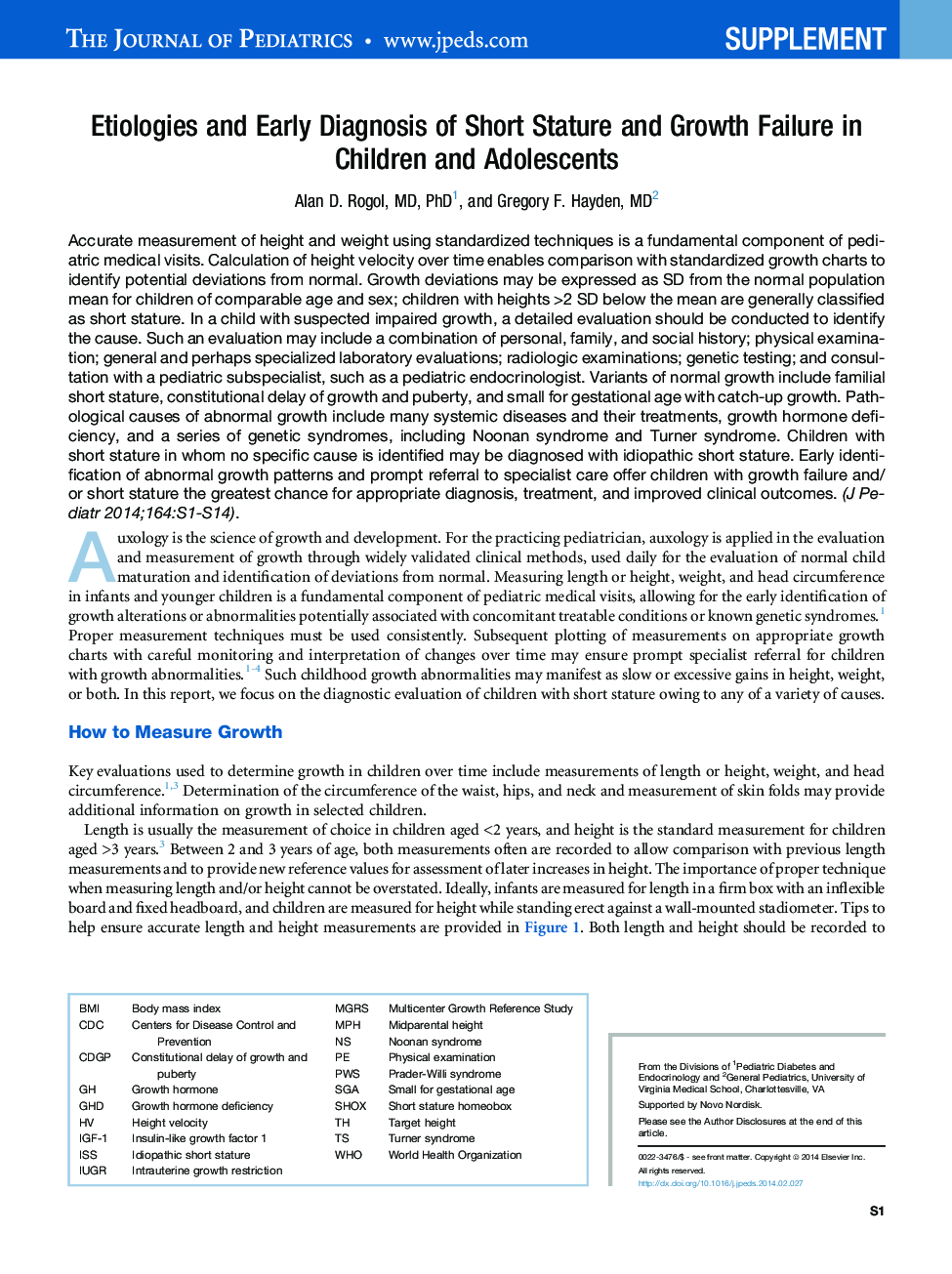| Article ID | Journal | Published Year | Pages | File Type |
|---|---|---|---|---|
| 4164838 | The Journal of Pediatrics | 2014 | 20 Pages |
Abstract
Accurate measurement of height and weight using standardized techniques is a fundamental component of pediatric medical visits. Calculation of height velocity over time enables comparison with standardized growth charts to identify potential deviations from normal. Growth deviations may be expressed as SD from the normal population mean for children of comparable age and sex; children with heights >2 SD below the mean are generally classified as short stature. In a child with suspected impaired growth, a detailed evaluation should be conducted to identify the cause. Such an evaluation may include a combination of personal, family, and social history; physical examination; general and perhaps specialized laboratory evaluations; radiologic examinations; genetic testing; and consultation with a pediatric subspecialist, such as a pediatric endocrinologist. Variants of normal growth include familial short stature, constitutional delay of growth and puberty, and small for gestational age with catch-up growth. Pathological causes of abnormal growth include many systemic diseases and their treatments, growth hormone deficiency, and a series of genetic syndromes, including Noonan syndrome and Turner syndrome. Children with short stature in whom no specific cause is identified may be diagnosed with idiopathic short stature. Early identification of abnormal growth patterns and prompt referral to specialist care offer children with growth failure and/or short stature the greatest chance for appropriate diagnosis, treatment, and improved clinical outcomes.
Keywords
IUGRGHDMPHMGRSIGF-1SGAISSCDCPWSSHOXTarget heightConstitutional delay of growth and pubertySmall for gestational ageWorld Health OrganizationHeight velocityPrader-Willi syndromeTurner syndromeNoonan syndromebody mass indexBMIinsulin-like growth factor 1Idiopathic short statureintrauterine growth restrictionCenters for Disease Control and PreventionPhysical examinationGrowth hormoneGrowth hormone deficiencyWHO
Related Topics
Health Sciences
Medicine and Dentistry
Perinatology, Pediatrics and Child Health
Authors
Alan D. MD, PhD, Gregory F. MD,
